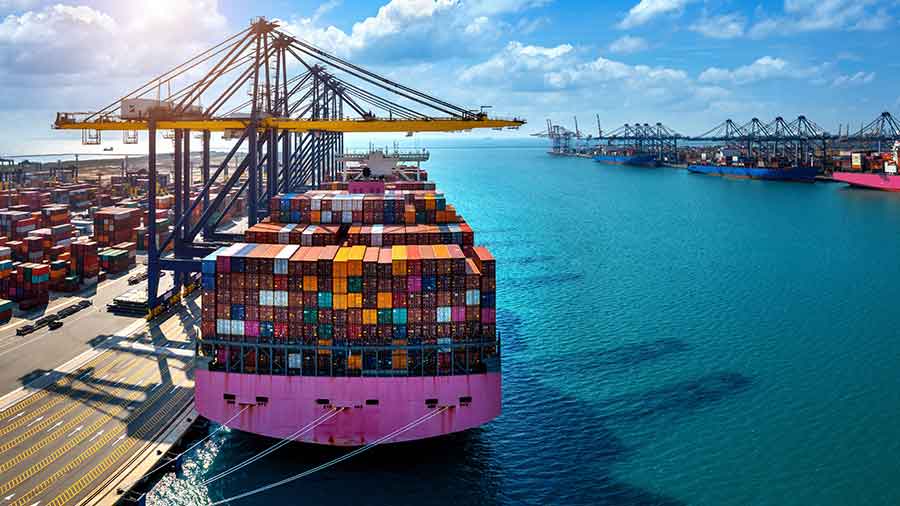Scotland Eager to Support Offshore Wind Power Projects in Vietnam
Scotland has shown eagerness to support Vietnam’s offshore wind power development during a meeting between its First Minister Nicola Sturgeon and Vietnamese Prime Minister Pham Minh Chinh on the sidelines of the 2021 Climate Change Conference (COP26) in Glasgow.
Vietnam has proposed collaboration in the form of foreign investment, technology transfer, and human resource training as the country aims to increase wind power capacity to 18 GW from its current 0.6 GW contribution by 2030.
This is also part of the government’s draft power development plan eight (PDP 8) for 2021-2030 with a vision to 2045. PDP 8 looks to solidify Vietnam’s commitment to renewables more broadly, especially in expanding solar and wind power in the country’s electricity generation mix.
Scotland, meanwhile, has rapidly transitioned away from fossil fuel power. In 2020, the country saw the equivalent of 97.4 percent of gross electricity consumption was generated from renewable sources. The country aims to generate half of its total energy consumption from renewable resources by 2030 and reach its net-zero emissions target by 2045.
Vietnam’s burgeoning electricity needs
Vietnam has catapulted from one of the world’s poorest countries into a lower-middle-income nation in one generation and with it, demand for electricity has increased at an average of 10 percent per year over the last five years. This demand was catered through the imports of coal for coal-fired power plants; more than half of the country’s electricity generation came from coal in 2020.
The country needs US$150 billion in new capital investments for electricity generation and grid upgrades to meet increasing electricity demands by 2030, increasing Vietnam’s energy capacity to 138GW. Between 2021 and 2025, the country’s power demand is forecast to rise 8.6 percent per year and 7.2 percent per year between 2026 and 2030.
The government issued a new Resolution 21 in January 2020 which sets out a plan for power generation in the country. Under the resolution, wind power has been given priority over other energy sources. Among wind projects, priority is further given based on location.
Wind power opportunities in Vietnam
Vietnam’s climate and topography naturally lend themselves to wind power, with average annual wind speeds reaching as high as 10m/s in southeast provinces and a coastline stretching more than 3,000km.
As such, offshore wind power has significant room for growth as a scalable alternative to coal imports. The country also relies on hydroelectric power and is home to several large rivers including the Mekong. Hydroelectric power formed 26 percent of the total electricity generation in 2020, but this is set to reduce from 2030 onwards as hydro’s reliability is impacted by periods of drought and water shortages.
For offshore wind power, however, the World Bank forecasts that Vietnam’s potential could reach 500GW by 2030, and consultancy firm Wood Mackenzie predicts Vietnam to account for 66 percent of total new wind capacity to be added to Southeast Asia by the same year. In comparison, Germany only has 8GW of offshore wind capacity and a countrywide total of 62GW installed.
There are several challenges in expanding this sector, namely related to high costs. Wind projects have a higher financial barrier to entry, with the average total installed costs for offshore wind power coming to US$3,200 per kilowatt, compared with US$900 for solar panels.
Further, wind projects can have a two-year construction period and few original equipment manufacturers (OEMs) produce the technology. PV-cell manufacturers, however, are widespread in Vietnam and so their construction costs are much lower.
Government incentives
The government is actively encouraging foreign investors to develop offshore wind projects in Vietnam.
Around 36GW is registered for development, situated in Bac Lieu, Ninh Thuan, Binh Thuan, Phu Yen, Khanh Hoa, Ben Tre, Ba Ria–Vung Tau, and Binh Dinh provinces.
They are also entitled to state loans and tax and non-tax incentives which include:
- A 10 percent applicable corporate income tax (CIT) rate for 15 years, which can be extended to 30 years in special cases;
- A CIT exemption period of up to four years;
- Goods imported as materials, raw materials, and semi-finished products which Vietnam is unable to produce and used for the wind project are tax-free; and
- A CIT reduction of 50 percent for up to nine years.
Further, the government is debating on whether to extend the current feed-in tariff (FIT) for onshore wind projects of US$0.85 per kWh and US$0.98 per kWh for offshore projects until March 31, 2022.
About Us
Vietnam Briefing is produced by Dezan Shira & Associates. The firm assists foreign investors throughout Asia from offices across the world, including in Hanoi, Ho Chi Minh City, and Da Nang. Readers may write to vietnam@dezshira.com for more support on doing business in Vietnam.
We also maintain offices or have alliance partners assisting foreign investors in Indonesia, India, Singapore, The Philippines, Malaysia, Thailand, Italy, Germany, and the United States, in addition to practices in Bangladesh and Russia.
- Previous Article Vietnam’s FDI Drops Slightly in 2021, but Reopening Measures Boosting Economy
- Next Article Investing in Northeast Vietnam































